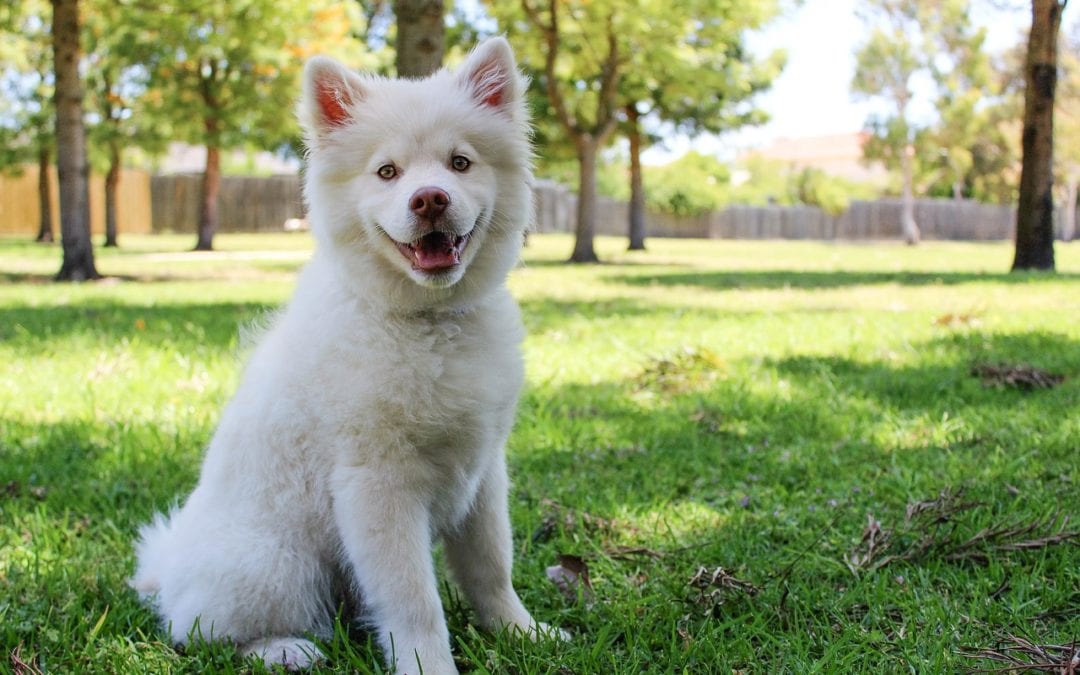As the temperature begins to rise well above the comfort zone, it’s only natural that we, as pet owners, begin to consider our pet’s health and safety in the summer heat. Hot weather doesn’t mean that you should stop taking your pet out for fun in the sun, though; just that you’ll need to be aware of the risks, and plan ahead for your pet’s well-being.
Like us, the biggest risks to your pet’s health in the heat of summer are dehydration and heatstroke. However, your pets are at a bit of a disadvantage when it comes to beating the heat, as they are only able to release body heat by panting and through the paw pads (which are usually pressed against hot ground). The rest of the time they are at our mercy when it comes to keeping cool.
Here are a few things to know about keeping your pets cool this summer…
Cat on a Hot Tin Roof
The summer heat can affect both cats and dogs, but it seems like most of conversations about keeping pets cool is focused on our canine companions.
This is likely because cats, as long as they have water and a shady refuge, have the common sense to sleep the hottest parts of the day away and avoid many of the dangers that dogs are exposed too.
It’s also unlikely that you’re tempted to take your cat to the store with you, or the lake, or on a run after work, so the conversation about keeping pets safe focuses mainly on dogs. That being said, however, it’s important to remember that cats can suffer from dehydration and heatstroke, just like dogs, and that you should take measures to protect your feline friends, too.
Too Hot for Spot
If you can’t stand, barefooted, on concrete, asphalt, or bare dirt for more than 7 seconds without your feet starting to burn, then it’s too hot for Spot and you should take the necessary precautions to keep your pet cool and well hydrated.
It’s also important to remember that once the temperatures reach 70°, that it is too hot to have your pet in the car, even for “just a minute”. This chart illustrates why leaving your pet in the car is a bad idea (hint: if it’s 70°outside, then your car – even with the windows partially open – will be 89° in just 10 minutes, and 99° in 20 minutes). If you must leave your pets in the car (at a pit stop while on vacation, for example), leave the AC on, along with some good tunes and a note in the window letting well-intentioned strangers know not to break your windows.
Hydration and Dehydration
Water is key for all mammals when the heat is on, and your pets are no exception. The amount of water your pet needs each day varies considerably on his or her size, activity level, and food consumption, meaning that there’s no hard rule to follow.
That being said, here are a few guidelines to consider:
- During the summer months, have one bowl of fresh water, plus one more, per-pet, both indoors and outdoors
- Keep water bowls in a variety of places outside, so that your pets have access no matter where they are in your yard
- Change outdoor water daily (use old water for flowers and plants)
- Take fresh water and a travel bowl with you whenever you take your pet out – be it running or to the lake
- If you’re exercising or playing with your pet, take frequent water breaks and plan your activity for early morning or later in the evening
- Listen to what your dog is trying to tell you, if he or she is whining or panting heavily, it’s time for a drink.
- The most immediate symptoms of heat-related dehydration include vomiting and diarrhea, if you notice this happening, get your pet to water as soon as possible
Keeping Your Pets Cool: Heat Stroke
Heat stroke can affect even the healthiest of pets, but those that are very young, very old, or that have suffered from heat stroke in the past are at the greatest risk. Symptoms of heat stroke include:
- Lethargy
- Excessive panting
- Dark or bright red or blue tongue and gums
- Rapid heart rate
- Sticky or dry tongue and gums
- Staggering (disorientation)
- Bloody diarrhea or vomiting
- Seizures
If your pet is showing symptoms of heat stroke it is important to call us (or a local vet in the area you’re traveling in) as soon as possible. Do not wait to see if symptoms pass. If you are out with your pet and the vet is a long way away, or you are out of cell range, do the following:
- Wet your pet down with cool water (a hose, your water bottles, the lake, a pitcher of water from a cafe՛, etc.)
- Get him or her into the shade or air conditioning immediately
- Offer water and encourage drinking (even in small amounts out of your hand)
While this may all seem like a lot, it’s really just common sense and planning ahead. You wouldn’t go out in the heat without planning for your needs, so why would you head out without planning for your pets’ needs as well?
As always, please don’t hesitate to give us a call with your questions or concerns. We are here to help, and want your pet to stay healthy and safe, no matter the time of year.

